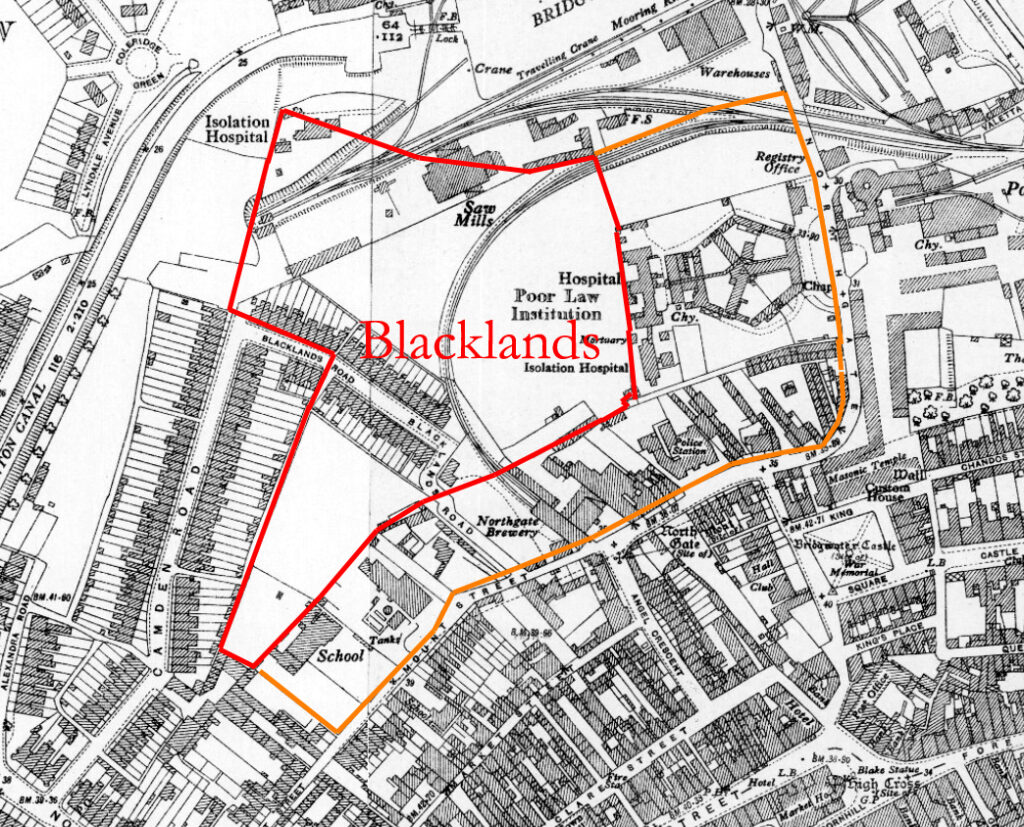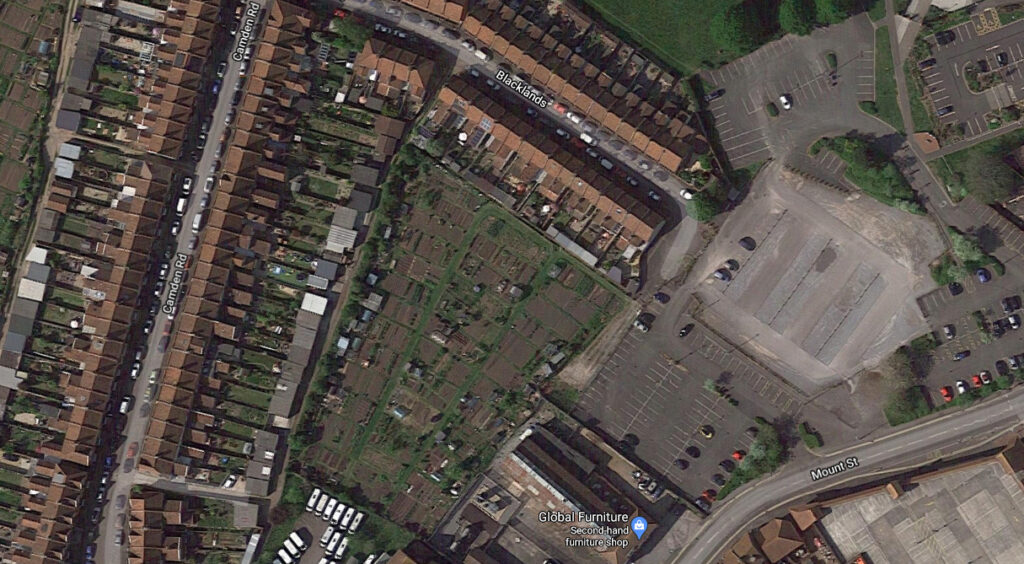‘Blacklands’ were a series of conjoined fields near the town’s medieval North Gate, now remembered by a road of the same name. ‘Blakelond’ is first recorded in a document of 18 November 1325, by which time the land had been divided into plots – here one acre of a larger whole was exchanged. ‘Blakelonde’ is again mentioned in 1346, 1362 (Dilks, Borough Archives, nos.101, 143, 2.4, 205). They are mentioned in 1622 as having once belonged to the Chantry Chapel of St George inside St Mary’s Church (SRO D/B/bw/1257).

Blacklands literally means the place with the black soil. On the face of it this does not seem remarkable; however, the more this name is thought about it may hint at a more interesting story. For a start the soil in the Parrett valley tends to be a brownie pink or ruddy brown. Looking at the allotments on Google Maps which occupy part of the old Blacklands, it is abundantly clear the soil is the usual natural local brown, not black.

Archaeologists have noted a striking correlation between medieval fields called ‘Blacklands’ and previous archaeological settlement in them, especially Roman. It is doubtful the medieval folk knew the land was previously occupied (unless there were ruins still standing), but previous settlement could often darken the natural soil, through burning or decay of timbers and organic matter: “Many Roman settlements have been found in fields with this appellation eg Cunetio, a Roman town west of Marlborough, and Blacklands, a villa site near Faversham, Kent. There are many more examples, too numerous to be simply accidental” (from Jayne Lawes, Blacklands A Landscape Jayne Lawes Excavation of a Late Iron Age and Romano-British Settlement, near Frome, Somerset, 2005). Also see the recent Roman Town found at ‘Blackgrounds’. Fields called Blacklands at Cossington lie very close to a known Roman Villa in Bawdrip.
Centuries of subsequent ploughing will have returned the soil to its natural ruddy brown hue (hence the allotment colour), but this apparently insignificant field name is a potential indicator of archaeological significance for Bridgwater’s otherwise unknown pre-history.
